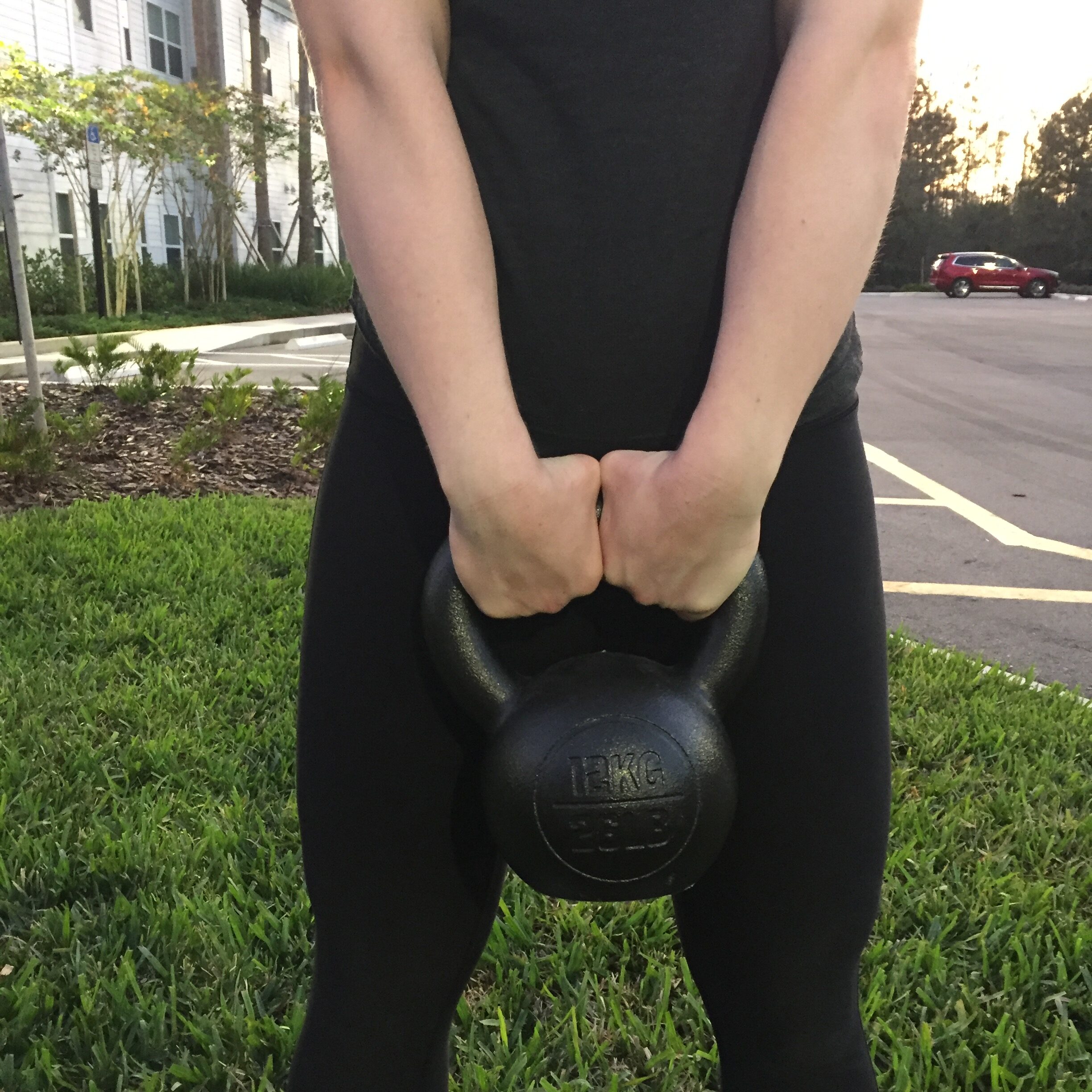If you’re a dedicated CrossFitter looking to elevate your performance, it’s time to explore the transformative benefits of kettlebell training. It’s easy to hyper-focus on the excitement of the barbell and forget this vital piece of equipment- but no longer! Kettlebells, with their unique shape and utility, offer an adaptable and effective training modality that can enhance your overall fitness. In this blog, we’ll delve into how the kettlebell can help you become a more well-rounded CrossFitter and share some of our favorite tips for using them.
Benefits of Kettlebell Training
Functional Strength and Power
Kettlebell training builds functional strength and power that directly translates to improved performance both in and out of the gym. The dynamic nature of kettlebell exercises, such as swings, cleans, and snatches, requires multiple muscle groups to engage simultaneously. The core, hips, glutes, and shoulders all work together to coordinate the successful execution of each movement. This results in increased full-body strength and power generation, which is critical for exercises like deadlifts, squats, and Olympic lifts. Crossfit.com even states that the “movement concepts and basic positions (of the kettlebell swing) are shared with many other barbell lifts.”
Furthermore, many everyday actions, like carrying groceries or picking up your child, necessitate the same movement patterns that can be trained by the kettlebell. CrossFit is all about “functional fitness,” and the kettlebell is as functional as it gets!
Improved Cardiovascular Endurance
Kettlebell training is an excellent tool for boosting cardiovascular endurance, another key component of CrossFit workouts that our sweat angels and gasps for air prove we are all too familiar with. The ballistic and high-intensity nature of kettlebell exercises pushes your cardiovascular system to new limits to challenge, and therefore improve, your aerobic capacity. Regular kettlebell training can elevate your heart rate, increase oxygen uptake, and enhance your body’s ability to efficiently utilize energy during intense workouts. By improving your cardiovascular endurance through kettlebell training, you’ll find yourself pushing harder and lasting longer during demanding WODs.
Enhanced Stability and Core Strength
CrossFit demands a strong, stable core for most exercises, and kettlebell training provides an excellent pathway to building one. When performing kettlebell exercises like Turkish get-ups, single-arm presses, or suitcase carries, your core muscles, including the abs, obliques, and lower back, are forced to work synergistically to maintain stability and control. The more you activate these muscles appropriately with a variety of exercises, the stronger your core will become. This increased strength can then enhance your ability to generate power, maintain good form during barbell/dumbbell lifts, perform gymnastic skills, and prevent injury during workouts.
Versatility and Convenience
One of the most appealing aspects of kettlebell training for CrossFitters is its versatility and convenience. With just one kettlebell, you can perform a wide range of exercises that are scalable to any fitness level. Kettlebells are also portable and require minimal space. This makes them an ideal training tool for those still looking to work out on days when they can’t make it into the box.
Tips for Training
Form First
Ensure that you are always prioritizing having good form with kettlebell movements over lifting heavier weight. Performing an exercise with a kettlebell is not the same as performing the exercise with a barbell! Therefore, it’s best to forget about comparisons and egos and use only what you can lift properly. You will get so much more benefit out of using a lighter kettlebell correctly than a heavier one incorrectly. As always, ask your coach for guidance if you have questions!
Grip
While hand placement will vary depending on the exercise being performed, we want to avoid “overgripping” with all kettlebell movements. As discussed in our blog on Different Grips Used in CrossFit, the handle should rest in your fingers, not palms. This creates the “kettlebell hook grip,” which is ideal for most movements and seen in the first picture below. The second photo demonstrates overgripping, where the bell is clutched in your palms. We do not want this, as it produces inappropriate tension and increases the risk of tearing your hands.
Hand Care
Lifting kettlebells, like most forms of weightlifting, can promote callus development on your hands. Read our blog on Hand Care for CrossFit to learn how to best manage calluses and keep your hands healthy!
Key Takeaways About Kettlebells
Incorporating kettlebell training into your CrossFit regimen can unlock a world of benefits. Their versatility makes them ideal for functional strengthening, cardiovascular conditioning, core stabilizing, and injury prevention. They can target weaknesses not addressed by other pieces of equipment or exercises. Furthermore, having variability in our training is what makes us as CrossFitters so holistically fit. Therefore, as tough as it may be to step away from the barbell, do yourself a favor by occasionally picking up the kettlebell instead.



